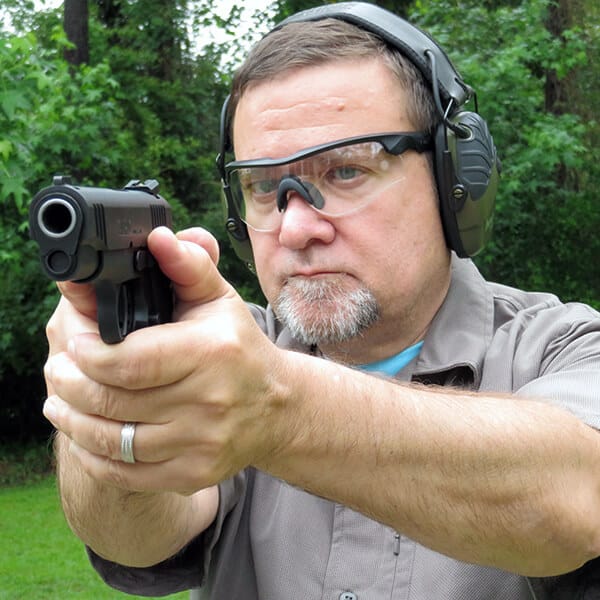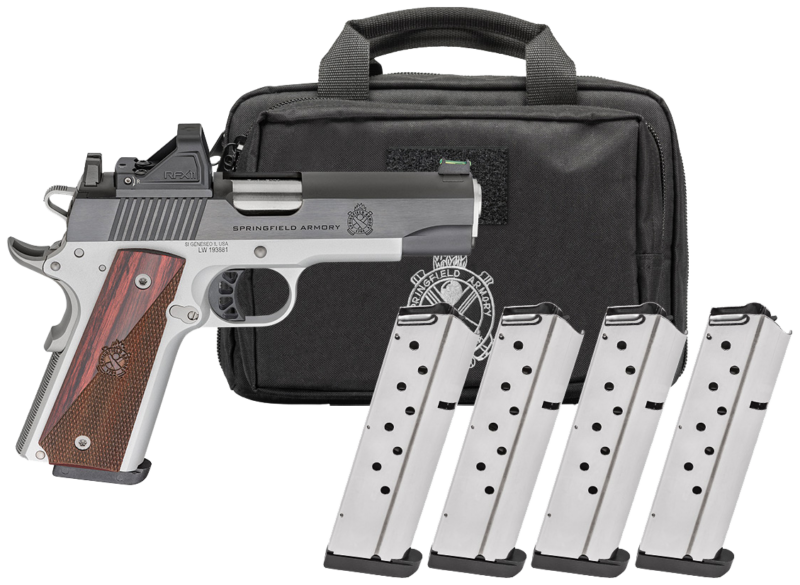XM177 — MACV-SOG’s Experimental 5.56mm
September 30th, 2025
6 minute read
Military Assistance Command, Vietnam — Studies and Observations Group (or MACV-SOG, for short) was a highly classified U.S. special operations unit that conducted covert operations before and during the Vietnam War.
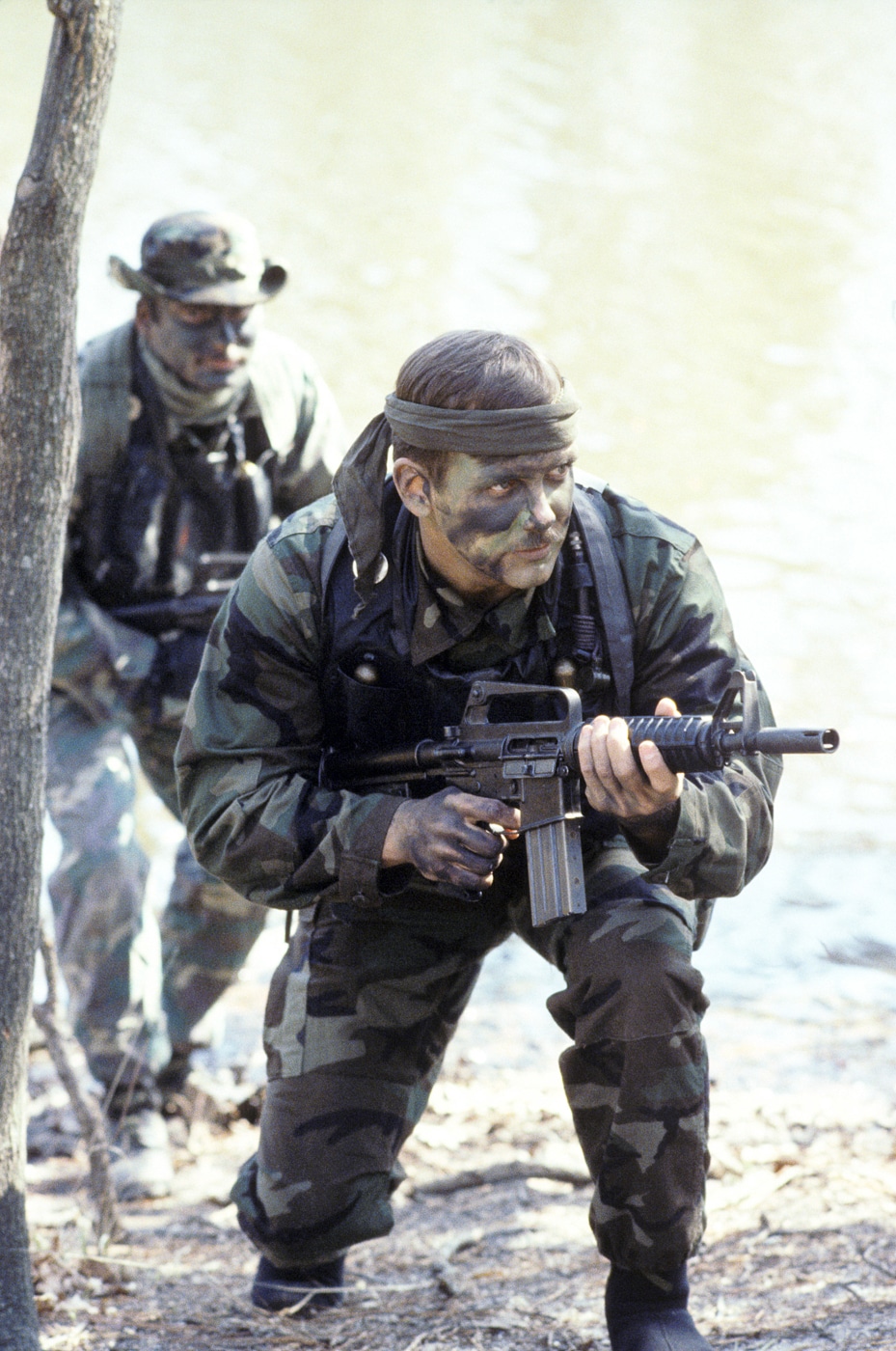
This elite team was a mix of Special Operations forces and CIA guys who performed clandestine operations while sneaking around the jungles. Their tactics were as unconventional as their weapons, and there was no area of Southeast Asia that was out of their area of influence — from North Vietnam and South Vietnam to Laos and Cambodia. We called them advisors. They were the ones that did the work that needed to be done.
Mission-Specific Weapons
The standard-issue M16A1 just didn’t fit the profile of their special missions. Plus, because they fought North Vietnam troops in Cambodia and Laos where they weren’t authorized to be, they needed weapons that weren’t normally identifiable.
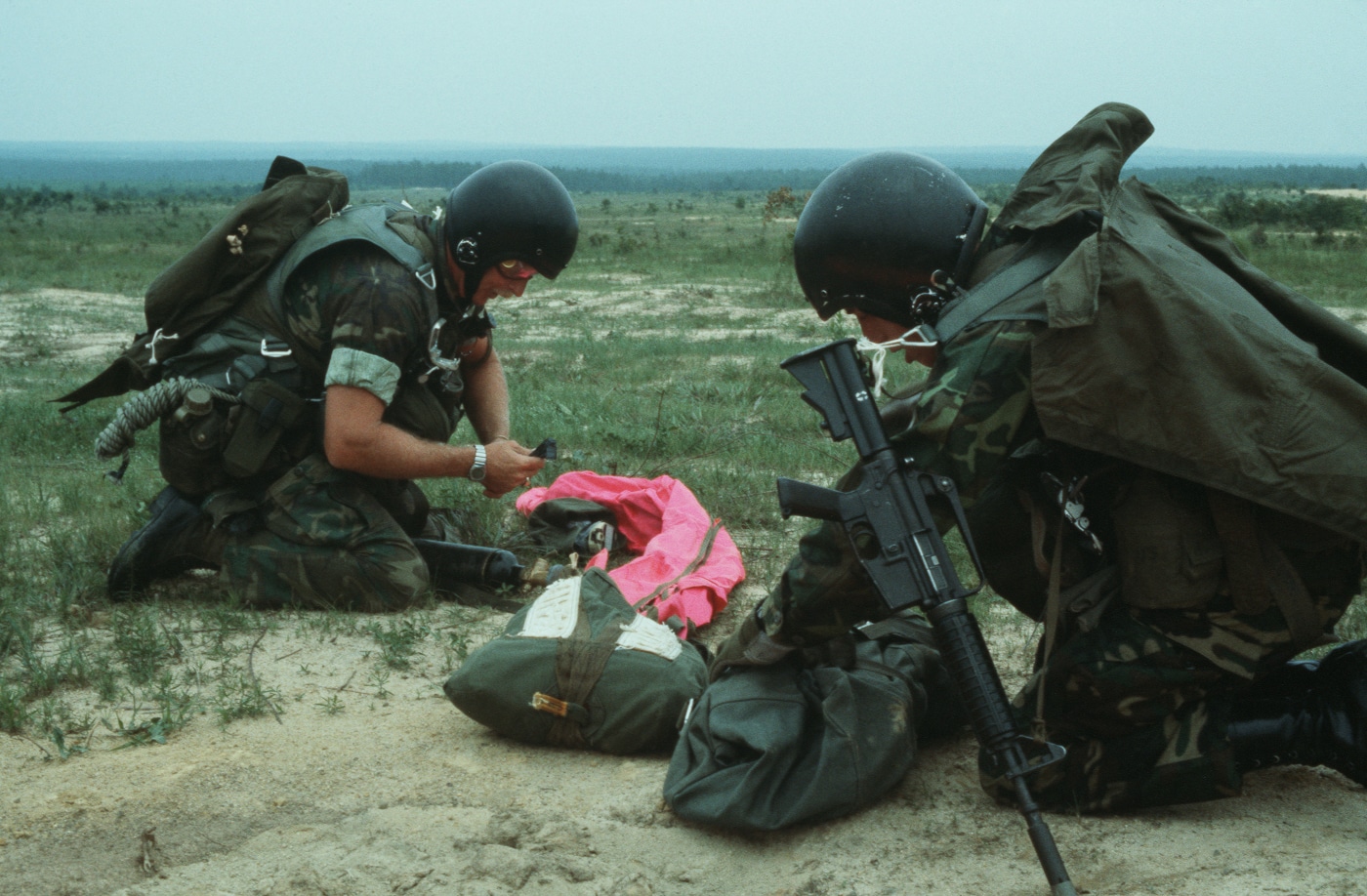
In some cases, they fielded the same weapons as their enemy, using captured AK-47s. Submachine guns were also carried since they were compact, lightweight and could pack a lot of ammo. Remember, these guys carried in what they needed. They were on their own in a hostile environment. There was no cavalry to come and save them if things went sideways. Suppressed pistols were common. Uzis and Swedish K submachine guns were also popular. This mix of weapons all offered plausible deniability that American troops were there.
There were other advantages. It’s easy to distinguish the sound of an AK from that of the M16. They both have a distinct sound. To a North Vietnamese guerrilla fighter, the sound of an AK meant friendly fire.

Compact firepower was a must for these warriors. However, the problem with submachine guns was that most were chambered in 9mm, which gave them limited power and range. The solution was a carbine in a rifle chambering.
What resulted in 1967 was the 5.56mm XM177E1. While compact AR’s with collapsible stocks are extremely common these days, this configuration was revolutionary at that time. The XM177 was truly experimental.
XM177: Shorty M16, Commando Approved
The XM177 is a shortened version of the M16. The M16A1 was lightweight, had minimal recoil and offered impressive firepower, but — with a 20” barrel — was anything but compact.
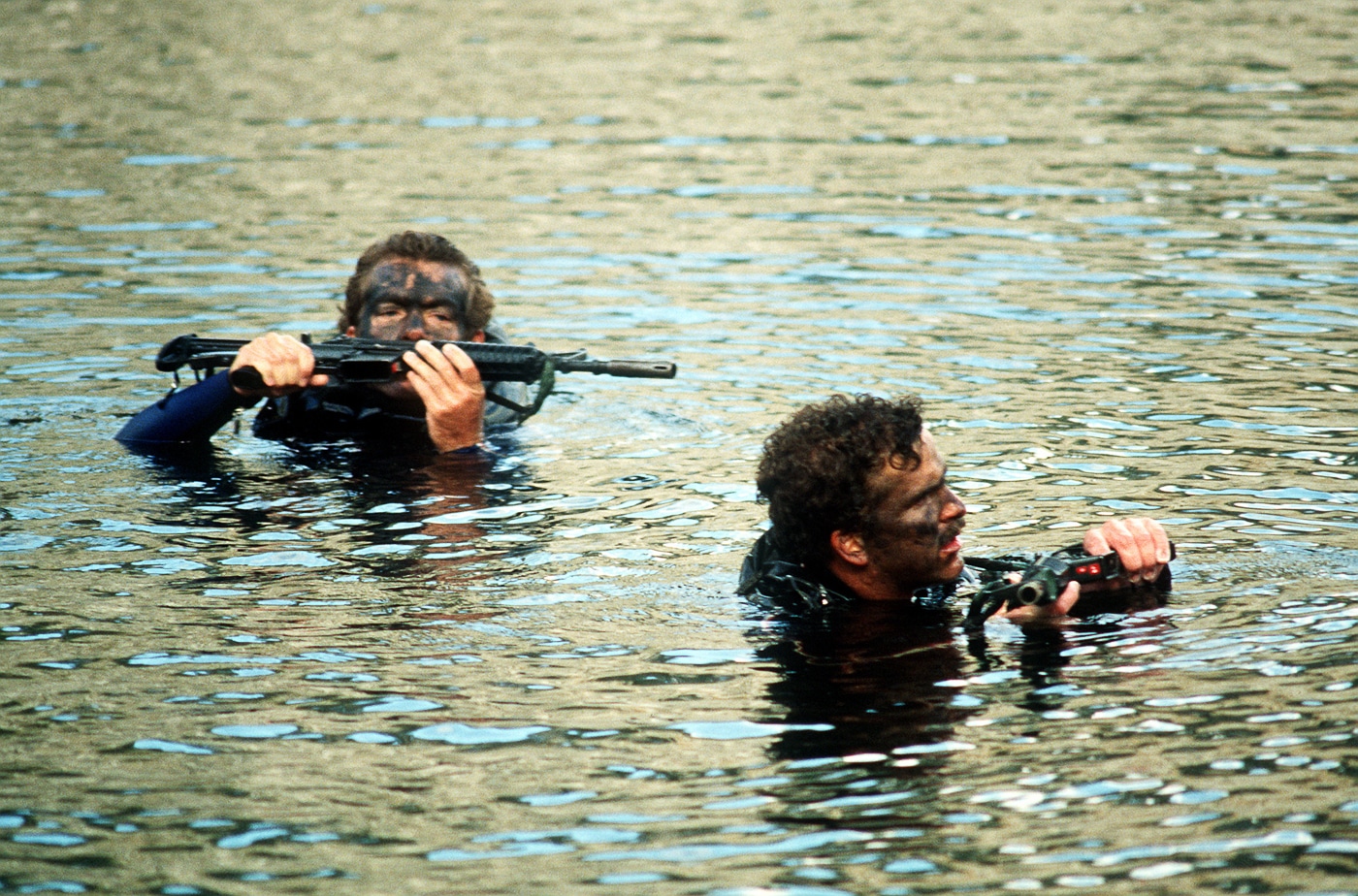
MACV-SOG needed to be quick on their feet in the deep jungle where they fought. Long, heavy weapons would be a liability. The main requirement for the XM177 was to be shorter and more compact. The M16A1’s 20” barrel was deep-sixed for a stubby 10” barrel with a “moderator” muzzle device screwed onto the end. A collapsing stock made the XM177 even more compact. The XM177 was basically the size and weight of a submachine gun, but with 5.56, rifle-caliber firepower. It outperformed any submachine gun in use at the time.
Designed for Jungle Warfare
As noted, the basis for the XM177 was the M16A1. The barrel, moderator and stock were the three features that were focused on and modified to create these shorty M16s. The selector switch still offered safe, semi and full-auto modes of fire.
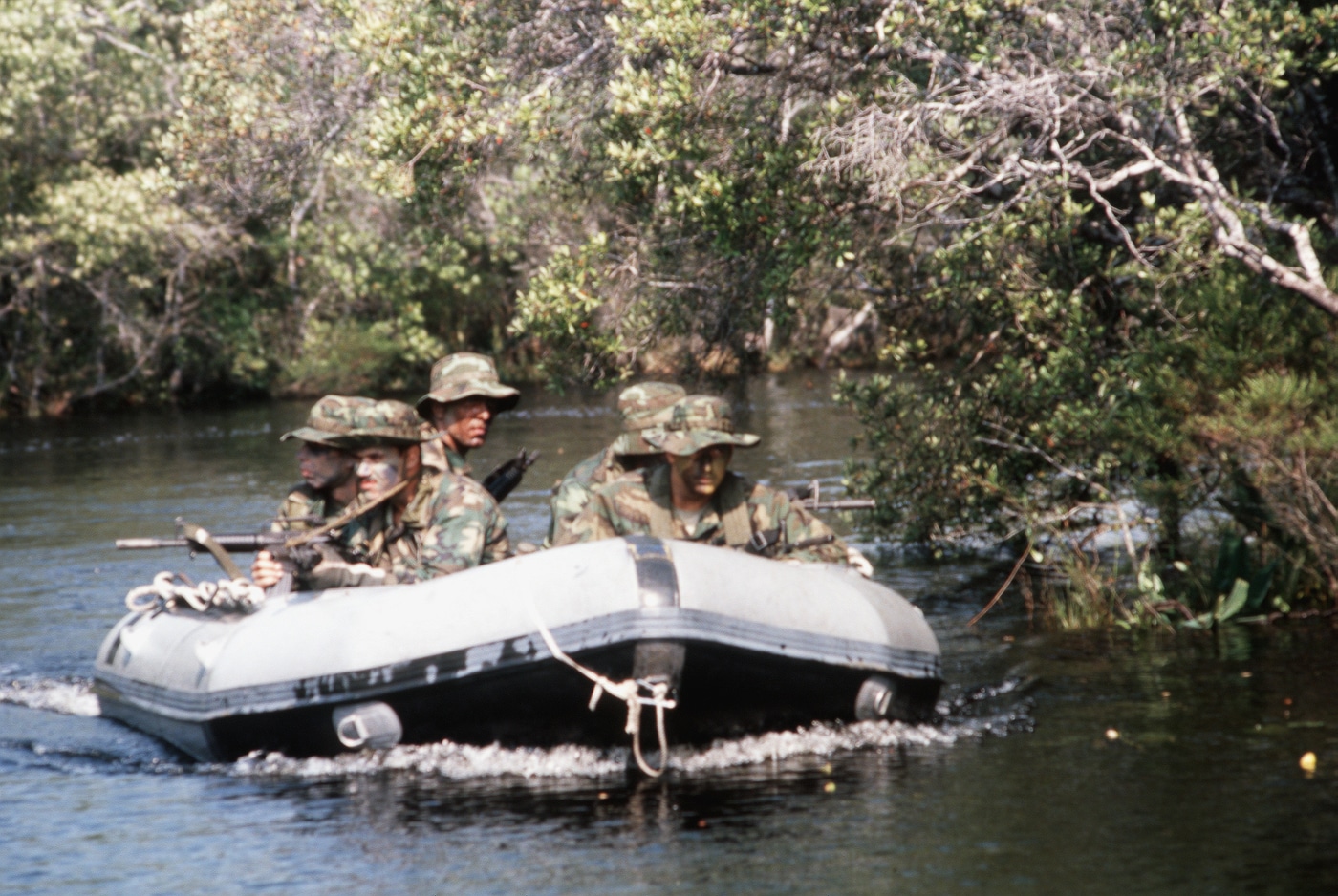
The two-position collapsible stock was a new concept at the time. Collapsed, the weapon was compact and easy to transport. The buttstock, made of aluminum, shortened the overall length of the carbine to just 28”. The M16A1 as-issued had a length close to 39”. This was long before six-position AR stocks were designed to compensate for body armor, gear or body stature.
There was plenty of experimentation with the M16 during the Vietnam War, and shortening the barrel was one common modification. Since then, we’ve learned a lot about reducing the barrel on an AR platform and keeping the system reliable. Back then, it was trial and error.
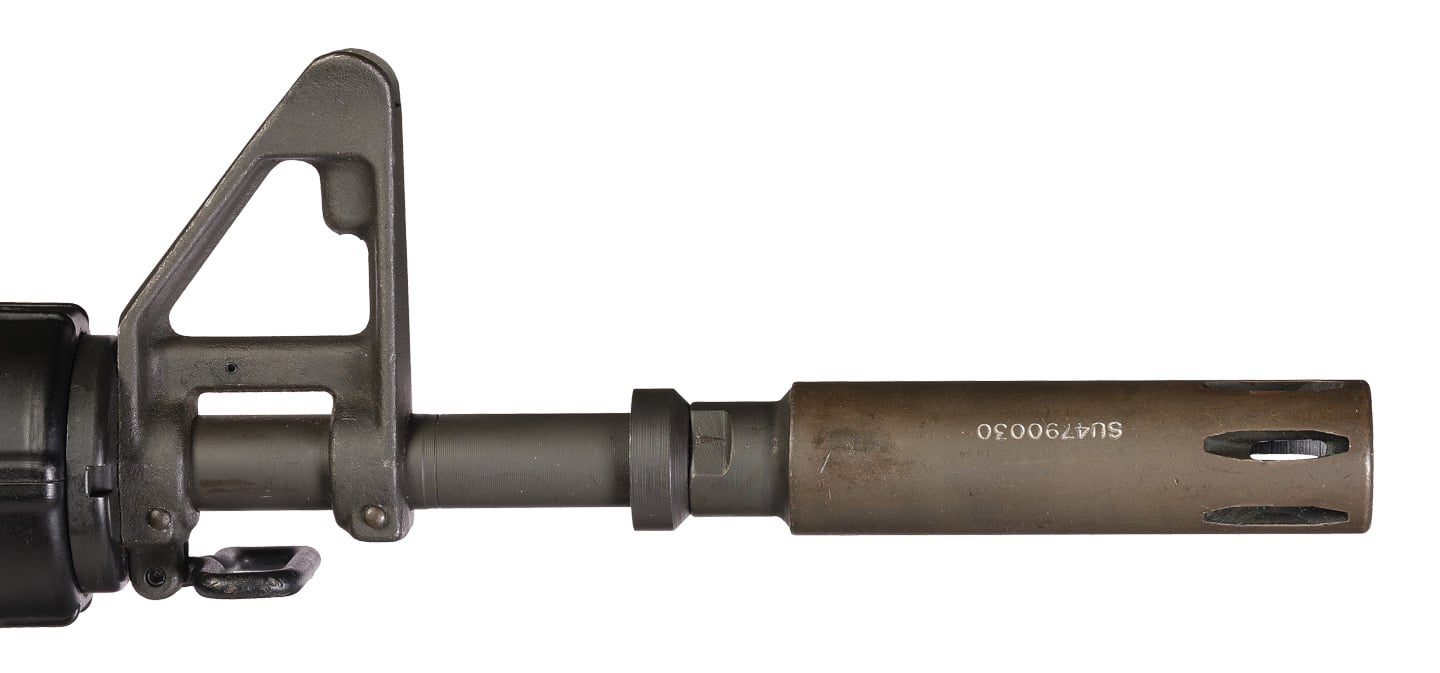
As noted, the XM177 used a 10” barrel. Of course, the direct gas impingement system needed to be shortened, as well. A long flash-hider with a small diameter exit port was added to the muzzle. During testing, the 10” barrel created a fireball out the muzzle every time it was fired, which wasn’t conducive to clandestine operations. The reworked gas system was reduced to compensate for the short barrel, and reliability was sketchy in the initial guns. The XM177 needed more work to be battle-ready.
Back to the Drawing Board
The result from more testing and modifications was the XM177E2, which used a longer 11.5” barrel and an improved moderator that reduced the noise signature and muzzle flash. The moderators worked, but they could not be disassembled like current suppressors. After extended use, the moderator started to clog up and was less effective. Interestingly, the sound proved to be more like an AK than an M16, which was important for guys running and gunning behind enemy lines.
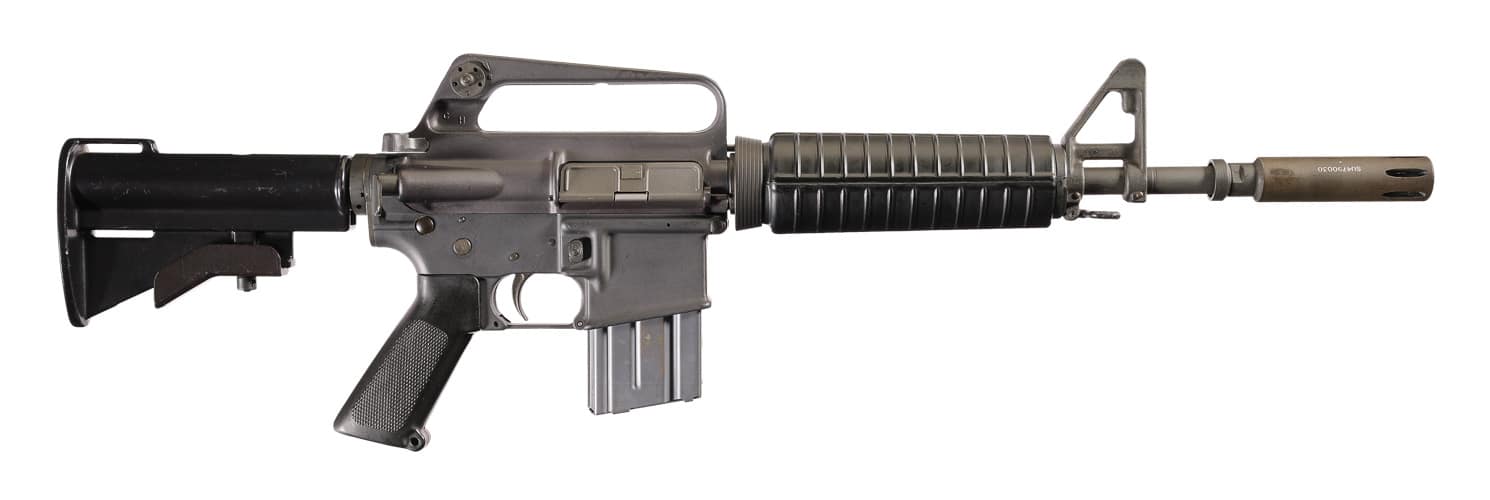
The XM177E2 was issued in small numbers. It used the standard 20-round steel magazine that was issued during the war, while 30-round magazines were also employed. The E2 wasn’t perfect. The moderator caked up with debris, making it less effective and causing the cyclic rate to vary and causing bullets to yaw. Eventually, the bugs were ironed out.
Conclusion
More work could have been put into the MX177E2 to make the moderator easier to maintain and more effective, but the war in Vietnam was winding down and there was no funding to continue development. However, they were definitely a success in the bigger picture. The XM177 carbines allowed MACV-SOG to be quick on their feet and maneuverable in dense jungle environments, offering impressive firepower in a compact package.
The work and effort put into the XM177E2 was not forgotten, foreshadowing and setting the stage for the development of the M4 Carbine. The XM177E1 and E2 variants were the pioneers of the ultra-compact assault rifle, resulting in the military’s M4 Carbine. — a direct descendant of the innovative XM177.
Editor’s Note: Please be sure to check out The Armory Life Forum, where you can comment about our daily articles, as well as just talk guns and gear. Click the “Go To Forum Thread” link below to jump in and discuss this article and much more!
Join the Discussion
Continue Reading
Did you enjoy this article?

 469
469





